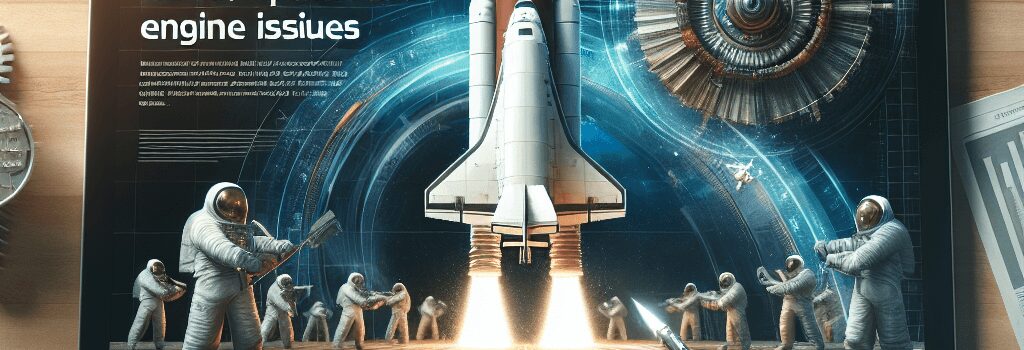Musk Predicts 80% Fix Chance for Starship Engine Issues

By expanding on SpaceX’s latest developments and technical challenges, we explore how the company is pushing reusability boundaries on the way to Mars.
1. Interview Highlights: Data, Tiles, and Turbopumps
On May 27, 2025, just before the ninth orbital test window opened at South Texas’s Boca Chica launch site, SpaceX CEO Elon Musk spoke with Ars Technica Senior Space Editor Eric Berger. Their conversation—focused on upper-stage engine bay failures, thermal protection systems, and Raptor engine upgrades—offers insight into SpaceX’s path toward a fully reusable Starship.
1.1 The Importance of Flight Data
“These launches are all about data. The most important thing is data on how to improve the tile design during the high-heating, re-entry phase,” Musk explained.
- Dozens of thermal protection tile experiments: coatings, fabrication methods, attachment systems.
- Gap-filler variations to prevent hot-gas ingress.
- Onboard sensor arrays logging temperatures up to 1,600 °C (2,912 °F).
1.2 Engine Bay Bolt Loosening and Explosions
Musk estimates an 80% probability that the recent upper-stage engine bay failures are solved:
- Post-static-fire analysis revealed bolt preload loss in the thrust chamber–injector interface.
- A micro-gap formed, allowing methane and oxygen to mix in uncooled cavities.
- Combustion in the wrong location led to explosive micro-leaks.
Mitigation: revised bolt-torque procedures, higher-strength fasteners (Grade 12.9), and integrated spring-washer locking mechanisms to maintain preload under thermal cycling.
2. Technical Specifications: Raptor 3 and Beyond
2.1 Raptor 3 Engine Design
Scheduled for late 2025, the Raptor 3 engine family introduces:
- Aft-end simplification: removal of external heat shield around the thrust chamber and turbopump.
- Advanced materials: additively manufactured Inconel 718 injector heads for higher creep resistance.
- Ring-laser gyros: embedded in the turbopump assembly for real-time vibration monitoring.
The result is a “naked” appearance where engines mount directly to the bulkhead structure, reducing secondary mass by 12% and improving thrust-to-weight ratio by 7%.
2.2 Booster Rapid Turnaround
Unlike Falcon 9’s multi-day refurbishment cycle, Starship’s booster—powered by 33 Raptors—can:
- Return to launch stand via “Mechazilla” catch tower within minutes.
- Undergo automated non-destructive inspection (ultrasonic and IR thermography) in under 30 minutes.
- Be refueled and reused in a single day, targeting 100 flights per year per booster.
3. New Sections for Deeper Analysis
3.1 Thermal Protection Materials: Innovations and Trade-Offs
SpaceX’s tile program is testing:
- Ceramic–matrix composites (CMCs): higher thermal conductivity but brittle fracture risk.
- Re-entry ablators: sacrificial layers based on phenolic impregnated carbon ablator (PICA).
- Silicon-based coatings: self-healing capabilities up to 1,400 °C.
Expert opinion: Dr. Sarah L. Kessler, aerospace materials researcher at MIT, notes that “integrating fiber orientation control in CMCs could reduce spallation by 30%, a key for high-Delta-V missions.”
3.2 Ground Test Infrastructure Upgrades
To accelerate engine qualification, SpaceX has:
- Installed dual-mode firing stands capable of 250 bar combustion chamber pressure.
- Upgraded cryogenic feed lines with active chilldown using liquid nitrogen prefills.
- Deployed high-speed Schlieren imaging systems for real-time plume diagnostics.
These enhancements align with DARPA’s AeroSpaceplane program goals and set a new industry standard for rapid test-and-iterate cycles.
3.3 Mars Logistics and Industrialization Roadmap
With Starship as the “Union Pacific to Mars,” SpaceX envisions:
- Initial cargo flights (2027–2030) carrying 100 tonnes of habitat modules and ISRU (in-situ resource utilization) equipment.
- In-flight refueling demonstrations by mid-2028 to enable direct Earth‐to‐Mars trajectories.
- Public–private partnerships for Martian semiconductor fabs, O2 production plants, and 3D-printing stations.
This vision echoes California’s growth post-railroad era, now applied interplanetarily.
4. Context: NASA, Artemis, and International Ambitions
Musk criticizes Artemis for “aiming too low,” advocating a direct Mars focus. Meanwhile, China’s Chang’e program eyes a lunar base, but Musk argues:
“We should be going 1,000 times further—Mars is 1,000 times farther than the Moon.”
NASA’s recent award of a $2.4 billion contract for next-generation lunar landers contrasts with SpaceX’s privately funded rapid-prototyping approach.
5. Outlook: From Reusability to Civilization Building
Over the next decade, SpaceX aims to:
- Demonstrate 150+ flights of Starship booster to validate turnaround economics.
- Secure long-term contracts for space tourism, satellite launches, and lunar logistics.
- Launch the first human-rated orbital Starship by 2026 to pave the way for Martian pioneers.
As Musk puts it, once reliable transport exists, “a vast set of opportunities” opens—ranging from pizza joints on Mars to full-scale civilization.